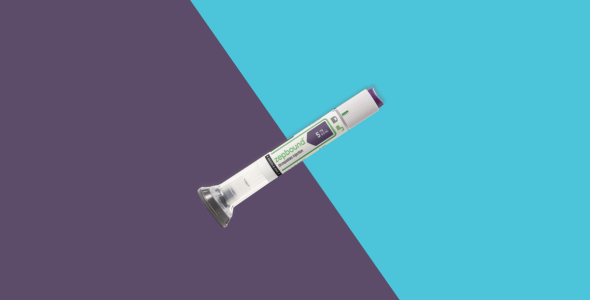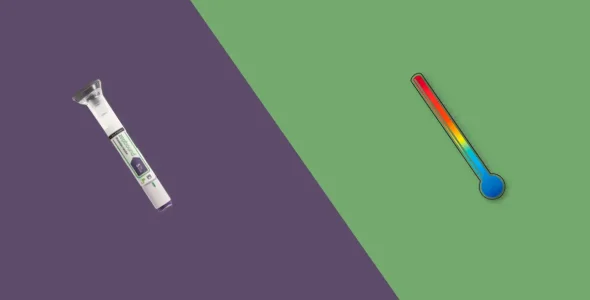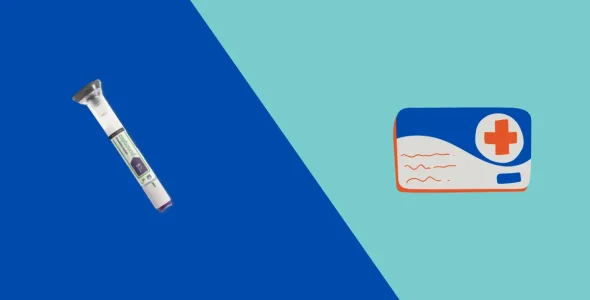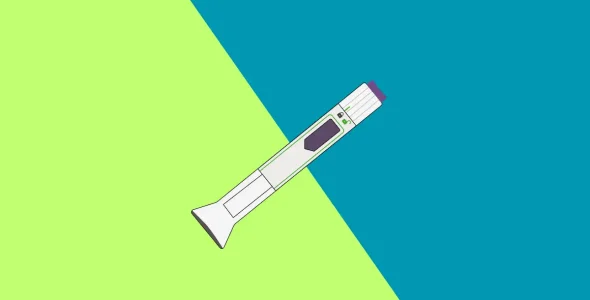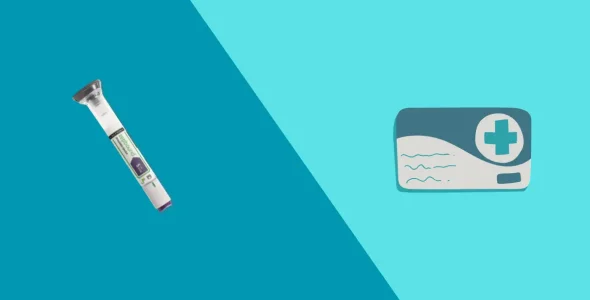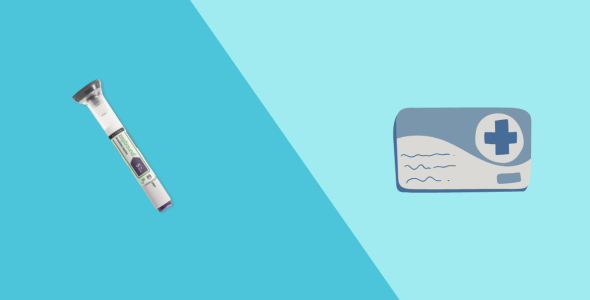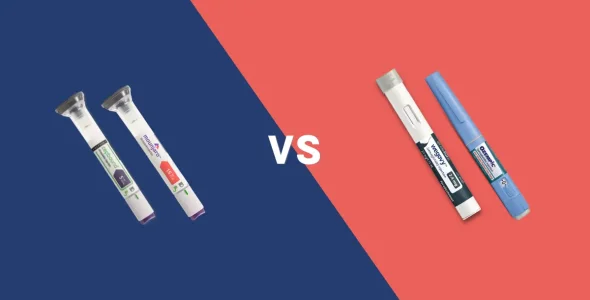Tirzepatide dosage chart for weight loss: a complete guide to proper dosing for optimal results
Ready to unlock your weight loss potential with tirzepatide? Find the optimal dosage for your weight loss journey with our comprehensive dosage chart.
Key highlights
- Tirzepatide dosage starts from 2.5 mg once weekly for the first 4 weeks and typically increases to 5 mg once weekly for the next 4 weeks. The dose is further escalated (titrated) by increasing by 2.5 mg every 4 weeks until reaching the maintenance dosage.
- During titration, it is not recommended to increase by more than 2.5 mg to avoid side effects. 15 mg once a week is the maximum dosage for tirzepatide.
- Do not escalate the tirzepatide dosage too quickly, as it can result in side effects such as nausea, vomiting, diarrhea, and gastrointestinal problems.
- Always consult your healthcare provider for dose adjustments and continuous monitoring. Do not try to self-adjust the dosage. intro
Tirzepatide is a GIP and GLP-1 receptor agonist. Manufactured by Eli Lilly, the medication comes with two brand names: Zepbound and Mounjaro. Zepbound is FDA-approved for chronic weight management in adults with obesity or overweight with at least one weight-related condition and mild to moderate obstructive sleep apnea. Mounjaro is indicated for improving blood sugar control in adults with type 2 diabetes.
When starting tirzepatide for weight loss, it is important to follow a proper dosing schedule and understand dosage guidelines to maximize the benefits and ensure safety while minimizing the risk of side effects.
Tirzepatide starting dose for weight loss is 2.5 mg once weekly for the first 4 weeks. The dose is typically increased to 5 mg once weekly for the next 4 weeks and further increased by 2.5 mg increments every 4 weeks until reaching the maximum tolerated dosage. 15 mg is the maximum tirzepatide dose.
This article provides a comprehensive guide to the tirzepatide dosing schedule, includes a detailed tirzepatide dosage chart for safe usage, and guides you on how to get maximum weight loss results with the medication.
Understanding tirzepatide
Tirzepatide works as a dual agonist at GIP (glucose-dependent insulinotropic peptide) and GLP-1 (glucagon-like peptide-1). These hormones are naturally produced by the body to reduce appetite and release insulin after food intake. Tirzepatide mimics the effects of these hormones to regulate appetite and promote blood sugar control.
It works for weight loss by slowing the rate at which food moves from the stomach into the duodenum. This effect gives a feeling of “fullness” for a longer time. Moreover, it promotes insulin release from the pancreas, inhibits glucagon secretions, and affects areas of the brain that control hunger.
Zepbound, a brand name of tirzepatide, is FDA-approved for weight management when combined with increased physical activity and a reduced calorie diet in adults with:
- Obesity (BMI 30 or higher)
- Overweight (BMI 27 or higher with at least one weight-related condition such as high cholesterol levels, hypertension (high blood pressure), diabetes type 2, and cardiovascular disease
- Moderate to severe obstructive sleep apnea (OSA)
Mounjaro contains tirzepatide as an active ingredient and is approved by the U.S. Food and Drug Administration (FDA) to promote blood sugar control in adult patients with type 2 diabetes when paired with a healthy lifestyle, such as dietary modifications and exercise.
A SURMOUNT-1 clinical trial showed that 91% of participants using 15 mg of tirzepatide once weekly lost an average of 22.5% of their body weight, compared to 3.1% in the placebo group over a period of 72 weeks.
Tirzepatide forms
Tirzepatide comes in the form of a subcutaneous injection solution which is administered under your skin (subcutaneously) once a week.
Zepbound comes in two forms: Single-dose injection pens and single-dose vials with syringes
Mounjaro comes in one form: Single-dose injection pens
Compounded tirzepatide comes in two forms: Prefilled syringes and multi-dose vials with syringes
Mounjaro and Zepbound single-dose injection pens are available in the same prefilled doses of 2.5 mg, 5 mg, 7.5 mg, 10 mg, 12.5 mg, and 15 mg. These are the most convenient to use as the dosage is already mentioned on the pens.
Zepbound single-dose vials are available in doses of 2.5 mg and 5 mg. The required amount of tirzepatide can be withdrawn from these vials with the help of sterile needles and injected under the skin.
Compounded tirzepatide is available in various doses depending on which tirzepatide compounding pharmacy you buy from.
Tirzepatide dosages
Tirzepatide is available in the following doses:
- 2.5 mg (tirzepatide starting dose)
- 5 mg
- 7.5 mg
- 10 mg
- 12.5 mg
- 15 mg (tirzepatide maximum dose)
Compounded tirzepatide dosage chart
Like Zepbound and Mounjaro, compounded tirzepatide dosage also follows a personalized dosage schedule for each patient. The standard weight loss dosing plan could look like:
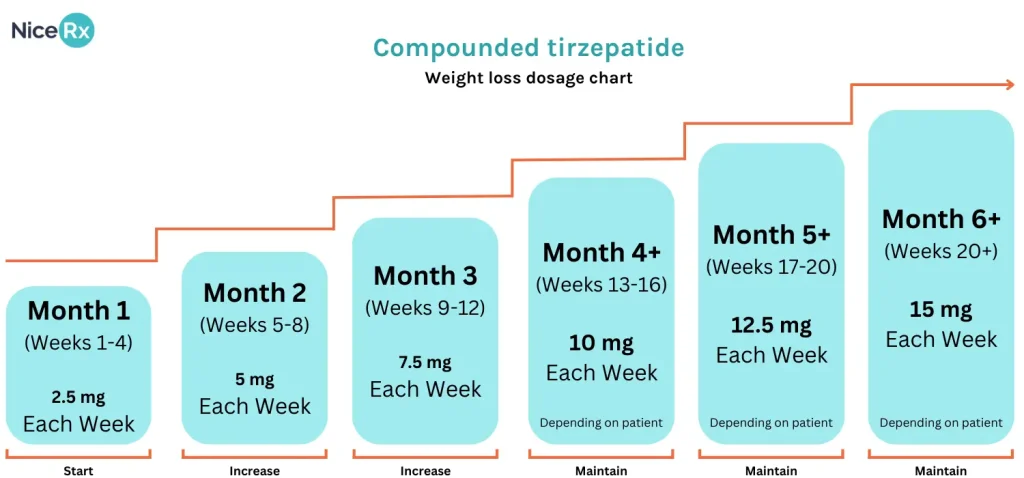
Disclaimer: This chart is for informational purposes only. It does not replace medical advice from a healthcare professional. Always consult a healthcare provider before changing doses.
Starting dose
Compounded tirzepatide starting dose is 2.5 mg once weekly for the first 4 weeks. The medication is started at a lower dosage to prevent gastrointestinal issues.
Dose escalation phase (titration)
Tirzepatide titration (dose escalation) typically follows this schedule:
- Weeks 5-8: 5 mg once weekly
- Weesk 9-12: 7.5 mg once weekly
- Weeks 13-16: If tolerated, increase to 10 mg once weekly
- Weeks 17-20: If the dosage needs to be escalated further, increase to 12.5 mg once weekly for 4 weeks
- Weeks 21 and onward: If the dosage needs to be escalated further, increase to 15 mg once weekly for 4 weeks
The maximum dosage is 15 mg once weekly if further glycemic control or weight loss is required.
Maintenance dose
Once you reach the desired results for ongoing weight loss or glycemic control, the dosage you are on is typically continued as a maintenance dose. The typical tirzepatide maintenance doses for weight loss are 5 mg, 7.5 mg, 10 mg, 12.5 mg and 15 mg once weekly.
Maximum dose
The maximum tirzepatide dose is 15 mg once weekly. You can not exceed the maximum dose.
Zepbound® (tirzepatide) dosage chart
Zepbound® (tirzepatide) is popular for weight loss due to its effectiveness. However, it’s essential to follow the recommended dosing guidelines to achieve optimal results. Incorrect dosing may lead to insufficient results or adverse effects. The standard prescribing dosing guidelines for Zepbound could look like:
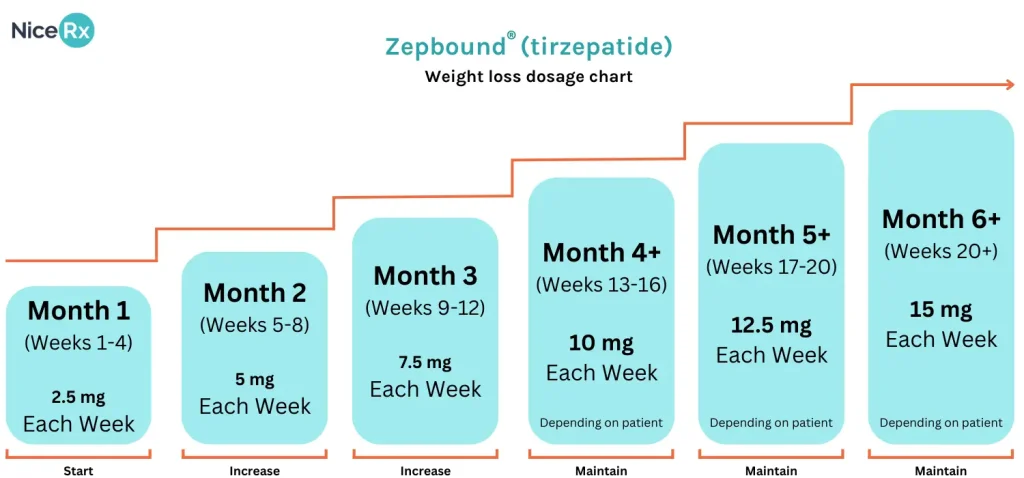
Disclaimer: This chart is for informational purposes only. It does not replace medical advice from a healthcare professional. Always consult a healthcare provider before changing doses.
Starting dose
Zepbound is started at a lower dose of 2.5 mg once weekly for the first 4 weeks to prevent the risk of gastrointestinal side effects such as nausea and vomiting. The initial low dosage ensures your body gets used to the medication before the dosage is increased.
Dose escalation phase (titration)
After the first 4 weeks, if the medication is well tolerated, your healthcare provider will typically increase the dosage to 5 mg once weekly for the next 4 weeks (weeks 5-8). In weeks 9-12, the dosage will be escalated to 7.5 mg once weekly if tolerated by the patient. If needed, the dosage can be increased to 10 mg once weekly in 13-16 weeks, 12.5 in weeks 17-20, and 15 mg in weeks 21-24. During the titration phase, the dosage is increased by 2.5 mg increments every 4 weeks.
Maintenance dose
The recommended maintenance dosage of Zepbound for weight loss and type 2 diabetes is 5 mg, 7.5 mg, 10 mg, 12.5 mg or 15 mg once weekly. For sleep apnea, 10 mg or 15 mg once a week is recommended.
Maximum dose
The maximum Zepbound dosage is 15 mg once weekly.
How to use the dosage chart
After each dose increment, continue the dose for at least 4 weeks. Do not escalate too quickly, as it can cause severe side effects. The dosage is gradually increased to avoid the risk of side effects associated with higher doses. Do not escalate the dosage by more than 2.5 mg every 4 weeks.
If you experience any side effects, fluctuation in blood sugar levels, or low blood sugar levels, consult your healthcare provider before taking the next dose. They might adjust your dose according to your body’s response and tolerance for the medication.
Never start the medication or increase the dosage on your own. Always consult with your healthcare provider for medical advice.
Factors influencing tirzepatide dosage
Tirzepatide dosage depends on an individual’s body response to the medication. Everyone responds differently to the medication. You may experience side effects while others may not. That is why it is important to get a personalized dosage schedule under medical supervision according to your body’s needs and tolerance.
Your weight
If you are obese and have a higher body mass index, you may need tirzepatide treatment for a longer time and at higher doses (if your body tolerates it) compared to those with a lower body mass index or those who are a bit overweight.
Your treatment goals
If you plan to lose more weight, you may need to continue tirzepatide for a longer time. Your prescriber will increase the dosage gradually according to your treatment goals and tolerance to tirzepatide side effects.
Everyone responds differently to medications
Dosage adjustments may be necessary based on individual response to the medication, including weight loss progress, blood sugar control, and tolerability of side effects. As well, genetic factors such as genetic variations in TCF7L2 genes may influence how long your body takes to lose weight.
Tolerance for side effects
The presence and severity of side effects can influence dosage adjustments. People experiencing severe side effects are prescribed lower dosages. In comparison, people with good tolerance who do not experience severe side effects can escalate their doses according to the standard prescribing schedule.
Other medications you’re taking
Tirzepatide lowers blood glucose levels. When used with insulin or sulfonylureas, it can cause low blood sugar levels. The lower dose of tirzepatide is preferred with these other medications to reduce the risk of hypoglycemic coma.
Other medical conditions
Dosage modification is generally not required with certain medical conditions such as liver and kidney disease. If you experience side effects, your healthcare provider may reduce the dosage.
Weight loss vs. diabetes management
The dosage of tirzepatide and choice of tirzepatide brand is also based on whether tirzepatide is being used for weight loss or diabetes management. Zepbound is used for weight loss and obstructive sleep apnea. Mounjaro is indicated for type 2 diabetes. The dosage of the medication depends on how much weight loss and glycemic control are needed.
Work closely with your healthcare provider to determine the optimal dosage and monitor for any necessary adjustments as you progress with your treatment.
How to use tirzepatide
Like semaglutide (Ozempic and Wegovy), tirzepatide injections are injected subcutaneously (under the skin) in the upper arm, abdomen, and thighs. It is administered with a pre-filled injection pen or a syringe.
Store the medication in its original packaging in the refrigerator at 36-46 F° or 2°C to 8°C. Protect the injection pen from light.
It’s recommended to keep the pen and compounded tirzepatide vial in a refrigerator but never freeze it.
The Tirzepatide injection pen (Zepbound and Mounjaro) has glass. If you accidentally drop the pen on the floor or hit a hard object, do not use it.
If you are going on a trip or traveling, keep in mind that tirzepatide can be stored at room temperature for up to 21 days only. The temperature should not be higher than 86°F or 30°C.
Prepare supplies and wash hands
Wash your hands thoroughly with soap and water. Collect all supplies such as an alcohol swab, injection pen or a syringe with the vial. Check the liquid in the pen. It should be colourless, clear, or slightly yellow. Never use the medication if the medication is cloudy or discoloured.
Prepare your dose
Prepare your dose according to the recommendation of your healthcare provider. Always check to make sure you know the correct dose before injecting.
Select your injection site
Tirzepatide can be injected under the skin of your stomach, upper thighs, or the back of the upper arm. Clear the area with an alcohol swab and let it dry before injecting.
Change the injection site every time you inject the dosage to avoid injection site reactions.
Inject the medication
If using the injection pens, pull off the base cap of the injection pen. Place the base of the pen flat on your skin at a 90° degree angle and unlock the pen. Press and hold the button for 10 seconds. When you hear the first click, it means the injection has started. The second click means the dosage has been administered.
If using the single-dose vials or compounded tirzepatide, remove the cap from the syringe or needle, draw air into the syringe equal to the amount of medication you will be injecting, insert the needle into the vial stopper and inject the air into the vial. Turn the vial upside down and carefully withdraw the prescribed dose of tirzepatide into the syringe. Check for air bubbles and gently tap the syringe to remove them. Insert the needle at a 90° degree angle in your skin and slowly push the plunger to inject the medication into your body.
Disposal
After using, do not throw the used injection pen or syringe into the household trash. Always put the pen into an FDA-approved sharps container. If you do not have one, use a household container composed of heavy-duty plastic.
Side effects and safety considerations
Generally, tirzepatide has mild side effects that are typically seen when you start the medication or increase the dose. These side effects normally subside over time as your body gets used to the medication. The most common side effects of the medication include:
- Nausea
- Vomiting
- Gastrointestinal issues
- Stomach pain
- Gastroparesis or slow gastric emptying
- Injection site reactions
- Thinning or hair or hair loss
- Low blood pressure
- Indigestion and excessive burping
- Mild allergic response to the medication
Sometimes, tirzepatide can cause severe side effects that need immediate medical attention. These include:
- Hypoglycemia (low blood pressure)
- Acute pancreatitis (inflammation of the pancreas)
- Changes in vision (due to diabetic retinopathy)
- Gallbladder problems
- Kidney injury
- Severe stomach problems
- Allergic or hypersensitivity reaction
If you need to have surgery while taking tirzepatide, inform your healthcare provider, as the medication increases the risk of aspiration during anesthesia or deep sedation. As well, if you are taking other anti-diabetes medication along with tirzepatide, it may increase the risk of hypoglycemia.
These side effects can occur due to a rapid escalation of dosage. To prevent these side effects, increase the dosage slowly, as recommended by your healthcare provider.
Tirzepatide is not recommended for people with or with a family history of thyroid tumors or a family history of medullary cell carcinoma (MTC) and MEN2 syndrome (multiple endocrine neoplasia type 2 syndrome) as tirzepatide increases the potential risk of developing these tumors in rodents.
Always use adequate contraception when using this medication. Do not take this medication if you are pregnant, trying to get pregnant or breastfeeding.
Tirzepatide has a boxed warning for the risk of thyroid c-cell tumors. Studies also show that tirzepatide may increase the risk of gallbladder disease.
Frequently asked questions
What should I do if I miss a dose of tirzepatide?
If more than 4 days have passed since the missed dose, skip the missed dose and take the next weekly dose on the regularly scheduled day. If less than 4 days (96 hours) have passed, take the missed dose as soon as possible and then take the next dose on the regularly scheduled day. Talk to your healthcare provider if you have been skipping your dose for over two weeks. They may prescribe a lower than the scheduled dosage.
What is the starting dose of tirzepatide?
The starting tirzepatide dose is 2.5 mg once weekly. The starting dose is administered for the first 4 weeks, on the same day each week and at the same time.
Can I start with a higher dose of tirzepatide to lose weight faster?
No, it is not recommended to start with a higher dose to lose weight faster. Higher doses are associated with potential side effects such as severe abdominal pain, stomach problems, nausea, vomiting, diarrhea, and constipation. To prevent these side effects, the dosage is escalated slowly according to your tolerance.
What happens if you take too much tirzepatide?
There is limited information on what happens if you take too much tirzepatide. However, you are more likely to experience severe side effects such as nausea, vomiting, hypoglycemia or low blood sugar levels, and diarrhea with high dosage. Hypoglycemia can lead to a coma, which is a medical emergency.
How often should doses be adjusted?
Tirzepatide dosage is typically adjusted every 4 weeks until you reach the maximum tolerated maintenance dosage. In case of side effects, fluctuations in blood sugar levels, sudden weight changes, and comorbid conditions, your healthcare professional may adjust the dosage.
What should I do if I experience side effects?
Generally, tirzepatide is well tolerated. Some people may experience mild side effects such as nausea, diarrhea, and constipation, which normally go away on their own as your body gets used to the medication. Drink plenty of fluids and eat whole foods to prevent nausea. Eat fiber-rich food such as fruits and vegetables, whole grains, and lean proteins to tackle constipation. In case of diarrhea, stay hydrated and consult your doctor for over-the-counter medication. If you experience severe side effects, consult your healthcare provider before taking the next dosage.
Is there a maximum dose for tirzepatide?
Yes, 15 mg once weekly is the maximum dosage for tirzepatide.
How long will it take to reach the maximum dose?
It may take 20 or more weeks to reach the maximum dosage (15 mg once weekly), depending on your body’s tolerance. Tirzepatide dosage starts at 2.5 mg once weekly. The dosage is escalated by adding 2.5 mg to the existing dosage every 4 weeks. There is no fixed time frame to reach the maximum dosage.
Can I adjust my tirzepatide dosage on my own?
No, you should not try to adjust the tirzepatide dosage on your own. Always consult with your healthcare provider for a customized treatment plan. They will measure your blood sugar levels, body mass index, HbA1c, and vital statistics to adjust the dosage.
Is the dosage the same for weight loss and diabetes?
Tirzepatide dosage for weight loss and diabetes is the same, but you need to use different brands of the medication. Mounjaro is used for the management of type 2 diabetes, while Zepbound is indicated for weight loss and sleep apnea. Both medications start at the same weekly dose of 2.5 mg. The dosage is increased in 2.5 mg increments every 4 weeks until reaching the maximum tolerated dose.
How long does it take to see results with tirzepatide?
Tirzepatide reaches its peak concentration in the body within 8-72 hours. It starts working as soon as it is injected. However, it takes a few weeks to promote significant weight loss and blood sugar control. A clinical study shows that tirzepatide caused changes in body weight at weeks 4, 12, and 24. Weight changes became more significant over time. Tirzepatide 5 mg showed an average weight loss of more than 5% body weight at the median time of 16 weeks, while 10 and 15 mg took 12.4 weeks to show significant weight changes and glycemic control.
How do I change my tirzepatide injection day?
If you plan to change the tirzepatide injection day, take the next dosage after 3 days or 72 hours of the previously scheduled day. For example, if you usually administer tirzepatide on Sundays, you can administer the next dosage on Wednesday or any day after Wednesday.
You can also speak to your doctor. They will help you safely change the injection day.
What is compounded tirzepatide?
Compounded tirzepatide contains the same active ingredient (tirzepatide) as Zepbound and Mounjaro, but it is prepared by compounding pharmacies according to patients’ needs. Compounding pharmacies may add extra ingredients (like vitamin B), remove some ingredients, or use different strengths of ingredients as prescribed by a healthcare professional to meet an individual’s needs. For example, if a patient is allergic to a certain ingredient in Zepbound or Mounjaro, compounding pharmacies can make a customized version of the medication to accommodate the patient’s individual needs. Compounded tirzepatide is also less expensive than the brand name drugs.
What’s the difference between compounded tirzepatide and Zepbound?
Zepbound is the FDA-approved brand name of tirzepatide. Manufactured by El Lilly, the medication is indicated for weight management and weight-related complications such as sleep apnea. Compounded tirzepatide is a custom-made tirzepatide that is manufactured by compounding pharmacies to meet patients’ need and is not approved or reviewed by the FDA.
Tips for optimizing tirzepatide treatment
Follow these tips to optimize tirzepatide treatment and get maximum results:
- Combine tirzepatide with a healthy diet and exercise for better results. The FDA has approved the medication along with increased physical activity and a healthy diet.
- Engage in exercises like cardio, strengthening exercises, and yoga. Exercise improves heart health, supports blood sugar control, and helps shed extra pounds.
- Consume fiber-rich foods such as fruits and vegetables, lean proteins, whole foods, and healthy fats to complement the effect of medication.
- Keep a journal or use an app to track your progress in blood sugar control and weight management.
- Do not miss the dosage or stop taking the medication without medical supervision. Communicate with your healthcare provider if you encounter any issues, such as side effects or unexpected results.
- Do not try to adjust your dosage or escalate it too quickly which may result in serious side effects.
Bottom line
Tirzepatide dosage starts with a low dose of 2.5 once weekly for the first 4 weeks. The lower dose helps reduce the risk of side effects while your body gets used to the medication.
The dosage is increased to 5 mg once weekly for the next 4 weeks. If needed, the dosage is increased by 2.5 mg increments every 4 weeks until you reach the maintenance dose. The maximum dose is 15 mg once weekly.
Several factors, such as eating habits, lifestyle, genetics, an individual’s tolerance to medication, comorbid health conditions, and taking other medications such as insulin and sulfonylureas, can influence the dosage of tirzepatide.
Always follow the dosage schedule prescribed by your healthcare provider. Do not increase or adjust the dosage on your own, as it can lead to severe side effects. Make regular follow-up visits so your doctor can monitor your progress and make necessary adjustments to the dosage as needed. If you experience any side effects, consult your healthcare provider and seek medical advice.



